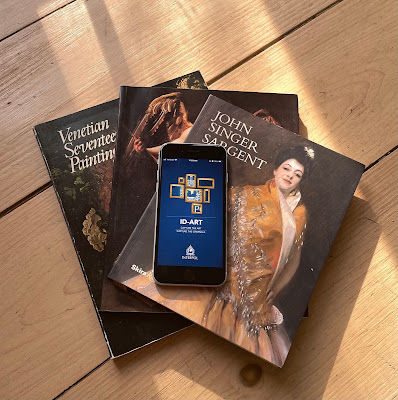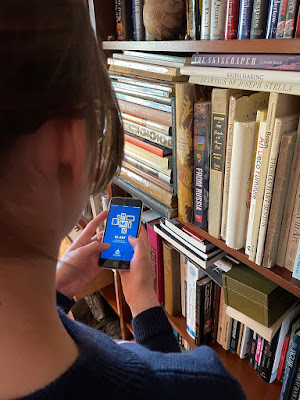Can you give us an introduction about yourself?
I’m honoured to be part of this interview and to share my journey in cultural heritage protection and the fight against the illicit trafficking of antiquities. My background combines extensive experience in cultural heritage preservation with a strong focus on safeguarding archaeological sites and cultural assets in conflict zones. Early in my career, I worked at the National Archaeological Museum of Aleppo and later at the Syrian Directorate-General for Antiquities and Museums (DGAM), where I engaged in efforts to protect heritage under various circumstances.
Over the years, I’ve collaborated with international organisations, including UNESCO, Europol, and the British Museum, as well as with law enforcement agencies on projects with the Italian Carabinieri TPC, and the Dutch National Police. I also founded ArchaeologyIN, a social media network aimed at promoting cultural heritage awareness across ten countries. This work remains close to my heart, particularly as we confront ongoing challenges to cultural heritage in the Middle East and North Africa region.
From Aleppo to Europe is quite a journey, can you tell us about that?
My journey into the world of cultural heritage protection began at the National Archaeological Museum of Aleppo. I was fortunate to work at one of the region’s oldest and most prestigious institutions, which fuelled my passion for preserving Syria’s rich heritage. My early days were filled with fieldwork, cataloguing artefacts, and collaborating with teams dedicated to archaeological research and preservation. Later, I joined the Syrian Directorate-General for Antiquities and Museums in Damascus, where my knowledge and experience in project management and international cooperation increased.
With the outbreak of conflicts in the Middle East and North Africa region and in response to the emergence of new challenges, I launched ArchaeologyIN, a platform designed to raise public awareness about the importance of cultural heritage. Over time, my work extended beyond Syria to encompass the broader MENA region. My research and collaborations have focused on mitigating the risks to cultural assets in conflict zones, working with global institutions such as UNESCO and ARCA. Each step of this journey has deepened my understanding of the complex network behind the illicit antiquities trade and strengthened my resolve to protect what remains.
How did you get involved with ARCA?
My connection with ARCA started through a shared passion for combatting art crime and protecting cultural heritage. I first learned about ARCA’s work through its extensive publications and network of experts. When I attended their postgraduate program as a Minerva scholar ten years ago, it became clear that this was more than an academic experience—it was a community of professionals committed to making a difference. The program’s unique approach to blending practical case studies with cutting-edge research inspired me to stay involved. I was later invited to join as a lecturer, an opportunity I gladly accepted. Teaching at ARCA allows me to engage with dedicated professionals and students who share a passion for protecting cultural heritage and disrupting the networks that traffic antiquities.
Can you tell us about the purpose of the your course?
This summer, I’ll be teaching Unravelling the Hidden Market of Illicit Antiquities, a course that offers participants a deep dive into the international trafficking of antiquities. We’ll explore case studies from the past 50 to 60 years, focusing on how the trade has evolved.
The course is designed to be both informative and interactive. We’ll begin with a historical overview of the illicit trade, then move on to key players in the market, from prominent dealers to auction houses, museums, and galleries. We’ll uncover the intricate network behind this shadowy trade by examining the roles of source, transit, and market countries. Our sessions will include practical discussions on the legal and ethical challenges of repatriation and the level of proof required to secure a successful claim.
Participants can expect a mix of lectures and interactive discussions, giving them the tools to better understand and confront this global issue.
Tell us life when you are in Amelia
Amelia is a hidden gem in the heart of Umbria, Italy. Nestled atop a hill, this charming medieval town offers a serene escape from the hustle and bustle of modern life. Narrow cobblestone streets wind through centuries-old buildings, leading to stunning views of the surrounding countryside. Life in Amelia is peaceful yet vibrant, with a rich cultural history, making it the perfect setting for ARCA’s program.
For participants, Amelia becomes more than just a backdrop—it’s a place to immerse yourself in Italian culture, connect with fellow professionals, and reflect on the importance of preserving our shared heritage.
Can you tell us what makes ARCA's programmes special?
One of the most unique aspects of ARCA’s program is its emphasis on blending theoretical knowledge with real-world application. Participants gain not only a deep understanding of the international art and antiquities crime landscape but also access to an extraordinary network of professionals. This program creates an environment where scholars, law enforcement professionals, and cultural heritage experts from around the world come together to share insights and collaborate on solutions to some of the most pressing challenges in the field.
A highlight of the summer is The Amelia Conference – 2025, ARCA’s Annual Interdisciplinary Art Crime Conference, which will take place from June 20 to 22, 2025. This conference is a rare opportunity for program participants to meet and engage with a wide range of experts in art crime and cultural heritage protection. The conference offers participants the chance to learn from leading voices in the field, expand their professional networks, and gain practical insights that complement their studies.
By the time participants complete the program, they’re not only better equipped to address the complexities of art crime—they’re also part of a vibrant, global community dedicated to protecting cultural heritage.
If you could follow another professor's course, which one would it be?
If I had the chance to take a course at ARCA, it would likely be “Discarded, Discovered, Collected: The Ethics of Antiquities Preservation and Publication” by Roberta Mazza. This course offers invaluable insights into why are antiquities exchanged on the market and what drives price formation? It also covers grouond on what is special about antiquities with texts inscribed on them, and the sometimes vulnerable relationships between academics and actors in the art market who deal in this type of textual remains.
Do you have any advice for applicants and participants?
My advice for new participants is simple: embrace every opportunity this program offers. Be curious, ask questions, and engage with the community. The beauty of this program lies in its diversity—everyone brings a unique perspective to the table.
Also, take the time to explore Amelia and immerse yourself in its history and culture. These experiences will enrich your understanding of cultural heritage in ways that go beyond the classroom. Most importantly, remember that what you’re learning here has real-world implications. You’re joining a global effort to protect our shared history—an effort that is more important now than ever.
By Edgar Tijhuis
 2026 Postgraduate Certificate Programmes,antiquities,antiquities looting,ARCA Art Crime Scholarship,art crime,illicit cultural property,illicit trafficking,Looting,museum security,provenance
2026 Postgraduate Certificate Programmes,antiquities,antiquities looting,ARCA Art Crime Scholarship,art crime,illicit cultural property,illicit trafficking,Looting,museum security,provenance
 No comments
No comments











































